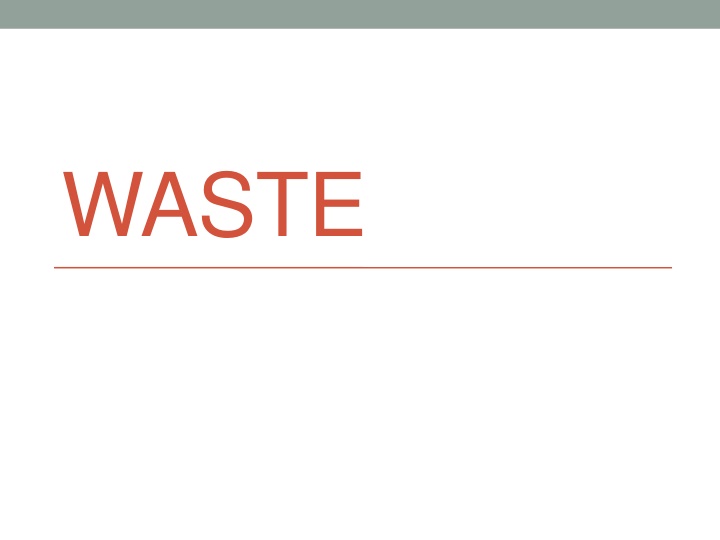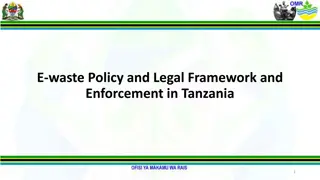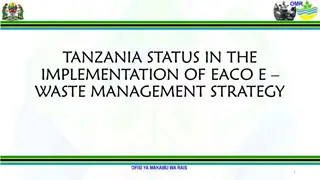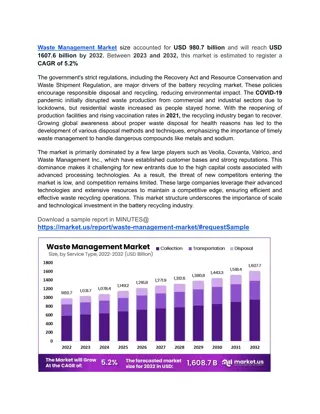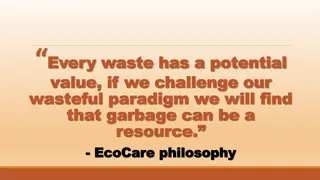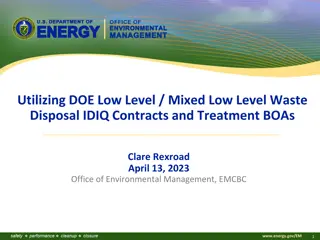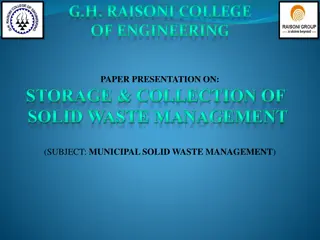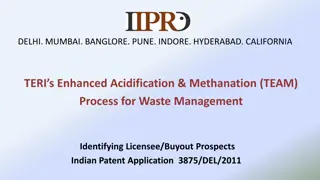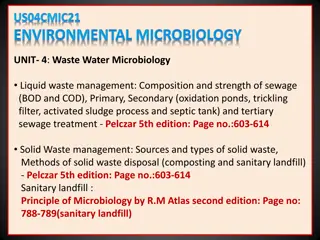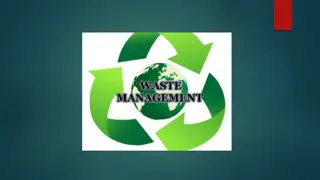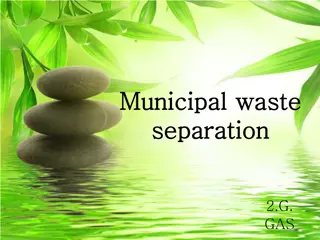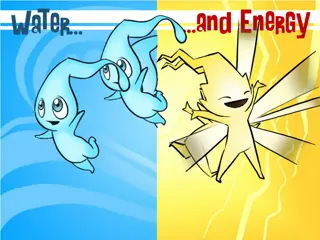The Growing Issue of Waste Generation
Solid waste, including discarded materials like garbage and refuse, is piling up rapidly, with the US alone generating over 10 billion metric tons annually. The trend of single-use products has exacerbated the problem, leading to a doubling of waste production per American since the 1960s. Disposal space is running out in many towns due to the increasing population and decreasing land availability. The distinction between biodegradable and nonbiodegradable waste is crucial, especially with the long-lasting impact of plastics, which are difficult for nature to break down. Solutions are needed to tackle the escalating challenge of waste management.
Download Presentation

Please find below an Image/Link to download the presentation.
The content on the website is provided AS IS for your information and personal use only. It may not be sold, licensed, or shared on other websites without obtaining consent from the author.If you encounter any issues during the download, it is possible that the publisher has removed the file from their server.
You are allowed to download the files provided on this website for personal or commercial use, subject to the condition that they are used lawfully. All files are the property of their respective owners.
The content on the website is provided AS IS for your information and personal use only. It may not be sold, licensed, or shared on other websites without obtaining consent from the author.
E N D
Presentation Transcript
The Generation of Waste Solid waste is any discarded solid material, such as garbage, refuse, or sludge's. Solid waste includes everything from junk mail to coffee grounds to cars. Every year, the United States generates more than 10 billion metric tons of solid waste.
The Generation of Waste Many products we buy today are used once and then thrown away. As a result, the amount of solid waste each American produces each year has more than doubled since the 1960s
Space and Waste Many towns are running out of space to dispose of the amounts of waste that people create.
Population and Waste It is getting harder to dispose of the waste we create because the human population continues to grow, while available land decreases. Today, the average person living in the United States produces 4.4 pounds of solid waste per day.
Not All Wastes Are Equal Wastes are made from two basic materials: A biodegradable material is a material that can be broken down by biological processes. Nonbiodegradable material cannot be broken down by biological processes.
Plastic Problems Plastics are made from petroleum or natural gas, which consist mostly of carbon and hydrogen. Plastics combine these elements in molecular chains that are not found in nature. Microorganisms have not developed ways to break down the molecular structures of most plastics. Therefore, some plastics that we throw away may accumulate and last for hundreds of years.
Municipal Solid Waste Municipal solid waste is the waste produced by households and businesses. Most of what we throw out on a day-to-day basis is called municipal solid waste. The amount of municipal solid waste is growing much faster than the amount of mining or agricultural waste.
Municipal Solid Waste Municipal solid waste creates more than 210 million metric tons each year of solid waste. And this is only 2 percent of the total solid waste in the United States.
Solid Waste from Manufacturing, Mining, and Agriculture Consumers indirectly create manufacturing waste by purchasing products that have been manufactured. Mining wastes include rock and minerals that are left exposed in large heaps, dumped in oceans and rivers, or disposed by refilling and landscaping abandoned mines.
Solid Waste from Manufacturing, Mining, and Agriculture Agricultural waste makes up 9% of the total solid waste but is biodegradable. The increased use of fertilizers and pesticides may cause agricultural waste to become more difficult to dispose of because the waste may be harmful if returned to the soil.
Landfills A landfill is an area of land or an excavation where wastes are placed for permanent disposal. More than 50% of the municipal and manufacturing solid waste in the United States ends up in landfills.
Landfills Landfills must contain the waste that is buried inside and keep it from causing problems with the environment. Waste inside a landfill must not come into contact with the soil and groundwater surrounding the landfill.
Problems with Landfills Leachate is a liquid that has passed through solid waste and has extracted dissolved or suspended materials from waste, such as pesticides in the soil. Leachate is a problem for landfills because it may contain chemicals from paints, pesticides, cleansers, cans, batteries, and appliances. If landfills are not monitored properly, leachate can flow into groundwater supplies and make nearby wells unsafe to drink.
Safeguarding Landfills The Resource Conservation and Recovery Act (RCRA), passed in 1976 and updated in 1984, requires that new landfills be built with safeguards to reduce pollution problems. New landfills must be lined with clay and a plastic liner and must have systems for collecting and treating leachate, as well as vents to carry methane out of the landfill.
Building More Landfills We are currently running out of space that we are willing to develop for new landfills. The materials we bury in landfills are not decomposing as fast as we can fill landfills. Even biodegradable materials, like newspapers, take several years to decompose. The total number of active landfills in the United States in 1988 was 8,000. By 1999, the total number of active landfills decreased to 2,300 because many of the landfills had been filled to capacity.
Building More Landfills The EPA estimates that active landfills in 20 states will be filled to capacity within 20 years.
Incinerators In 1999, the U.S. had 102 operational incinerators that were capable of burning up to 94,000 metric tons of municipal solid waste per day. Incinerators are one option for reducing the amount of solid waste in landfills. Incinerated materials do not disappear, but the weight of solid waste is reduced.
